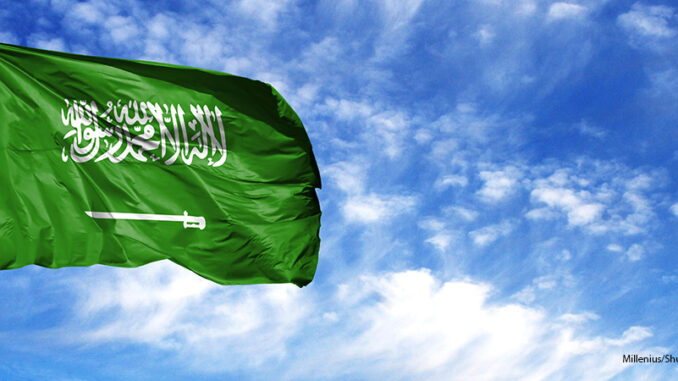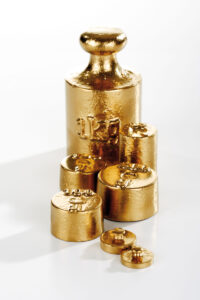
Trump Appoints New Ambassador
Saudi Arabia has been in the news a lot lately because of the murder of Washington Post journalist Jamal Khashoggi in October at the Saudi Consulate in Istanbul. So far in his term, the president has not appointed a U.S. ambassador to Saudi Arabia. But on November 13, after nearly two years without one, he finally made an appointment: retired Army General John Abizaid. Abizaid, a four-star general, was the longest-serving commander of Central Command, from 2003 to 2007. The general was the top U.S. commander in the Middle East and oversaw the war in Iraq. Of Lebanese Christian descent, Abizaid, 67, speaks Arabic and studied Saudi Arabia’s weapons procurement policy as his master’s thesis at Harvard University.
This appointment is critical because the relationship between the U.S. and Saudi Arabia has been extremely strained since Khashoggi’s disappearance about six weeks ago. Saudi officials initially denied Khashoggi’s death, then admitted to it but said that the Crown Prince, Mohammed bin Salman, had no knowledge of it. On November 20, Trump publicly stated that he remained in favor of the Saudis despite the growing evidence of Crown Prince Salman’s knowledge before the events of Khashoggi’s death. But at the same time, he continues to uphold a multi-billion dollar arms deal with Saudi Arabia. After Khashoggi’s death, Trump’s son-in-law, Jared Kushner, took on some of the roles of ambassador, such as meeting with the Saudi royal court. But a situation this delicate requires the skills and experience of an actual ambassador.
Abizaid will not officially become ambassador until his nomination has been approved, or confirmed, by the Senate.
Dig Deeper Use Internet resources to put together a timeline of important events in General Abizaid’s life and career. Based on what you’ve found, do you think he is a good choice for Saudi Arabian ambassador? Why or why not?
Kilo-what?

Credit: Creativ Studio Heinemann/Westend61/Alamy
It might sound crazy, but have you ever stopped to think about how it was originally decided that an inch is an inch, or a meter is a meter? Or what determines how large or small those measurements should be? One unit–the kilogram–is about to be reimagined. Up until now, the kilogram was defined by Le Grand K, a platinum and iridium cylinder. It’s been kept in a vault outside Paris since it was created in 1879, when the General Conference on Weights and Measures determined it to be the official, international prototype of the kilogram. The metal is heavily protected and can’t even be touched by human hands, out of fear that even a small scratch or fingerprint could affect its weight–and literally change the definition of a kilogram.
Many scientists and mathematicians, however, find it ridiculous that with all of today’s advancements in technology, we still use this antiquated measurement of mass. So last week, a committee of fifty countries making up the international General Conference on Weights and Measures unanimously decided to redefine the kilogram. But what does that really mean? From now on, the mass of a kilogram won’t be determined by a piece of metal from the 19th century. Instead, it will be based on the unchanging elements of the universe, such as the speed of light and Planck’s constant. This will make official measurements much more accurate, precise, and unchanging in the future.
Dig Deeper A meter was originally defined by a metal bar in France. But scientists eventually redefined it, the way they are now doing with the kilogram, by basing the measurements on universal constants. Use Internet resources to learn what defines a meter today.
Farewell Stan Lee
Stan Lee, the legendary writer, editor, and publisher of Marvel Comics, died on November 12 in Los Angeles at the age of 95. Lee started off in the comic book business as a gofer in 1939, making $8.00 a week. Since then, he was responsible for the creation or co-creation of such unforgettable and iconic characters as Spider-Man, the X-men, Thor, Iron Man, Black Panther, and the Fantastic Four. In the 1960s, Lee began to realize that it wasn’t enough for superheroes to be strong: they also needed to have personality. He began to give them interesting and human flaws, and also created psychologically complex villains. His creation process became known as “The Marvel Method”: Lee would brainstorm a story with an artist and write a synopsis, and then after the artist drew the story panels, Lee would fill in the word balloons and captions. Thanks largely to Lee’s contributions, Marvel went from a small business to the world’s number-one publisher of comic books. The company eventually became Marvel Entertainment and was purchased by Disney in 2009 for $4 billion dollars. Marvel characters are featured in almost every one of the top-grossing superhero films of all time.
His personal life, though, was not quite as successful. Born Stanley Martin Lieber in New York City, he grew up poor. Even after he achieved fame in the comic world, the Manhattan literary community snubbed his work as insignificant. In 1947, he married his wife, Joan, and had two daughters, one of whom died in infancy. His later years were marked by the death of Joan and by legal troubles–he sued the executives at a company he founded, his ex-business manager, and the man who had been handling his affairs. Overall, however, he leaves behind an incredible legacy as generation after generation of children (and adults) enjoy his creations.
What Do You Think? In your opinion, what was Stan Lee’s greatest contribution? Why?
#SausageGate
Apparently, Australians take sausage sandwiches very seriously. So seriously, in fact, that the suggestion of a change to how sausage sandwiches are arranged has led to a national outcry.
Here’s what happened. In Australia, a national chain of 300 hardware stores called Bunnings Warehouse regularly allows community groups to host barbecues called “sausage sizzles,” during which the groups sell sausage sandwiches outside the store as a fundraiser. These open-faced sandwiches are pretty simple, and consist of a sausage, topped with onion and ketchup (or “tomato sauce” in Australia), on a slice of white bread. However, last week Bunnings sent out a message to community groups that the sandwiches are now to be made with the onion on the bottom only. This, according to Bunnings, is because people often buy a sandwich and enter the store while eating it. Bunnings feared that the slippery grilled onions might slide off the top of the sandwich and wind up on the floor, where other customers could slip and fall on them, possibly leading to lawsuits.
The suggestion was not well received by the Australian public, with the hashtag #sausagegate popping up all over social media. Even the prime minister was pressed by reporters for his take on the situation. (He said he would keep eating the sandwiches either way.) The outcry led some skeptics to wonder if the whole thing was just a way for Bunnings to try to gain itself some publicity, but the store’s owners insist that safety is truly their first priority. In fact, several customers have actually slipped on the fallen onions in the past, which has forced the store to make financial payouts. These victims insist that the onion controversy is no laughing matter, and point out that one could even be killed by such a fall if one’s head hits the concrete floor on the way down.
